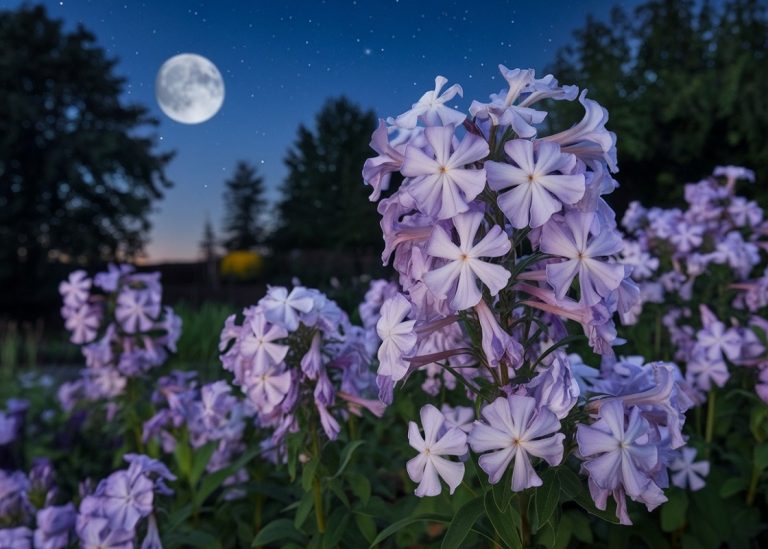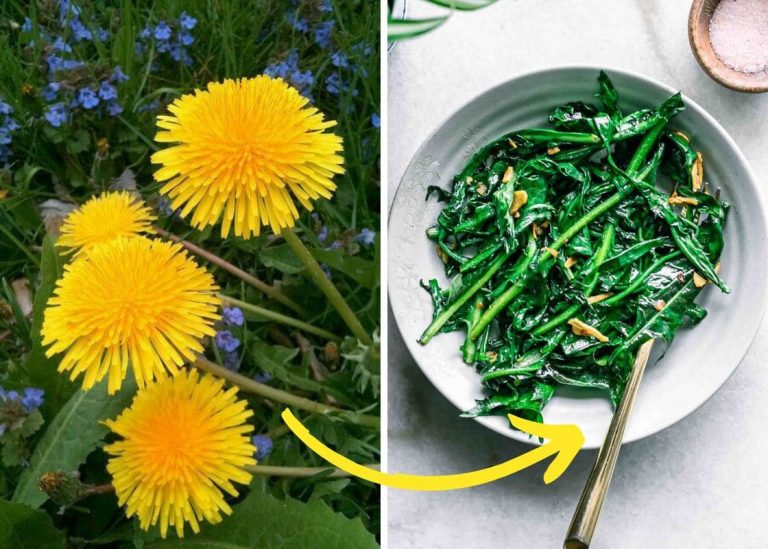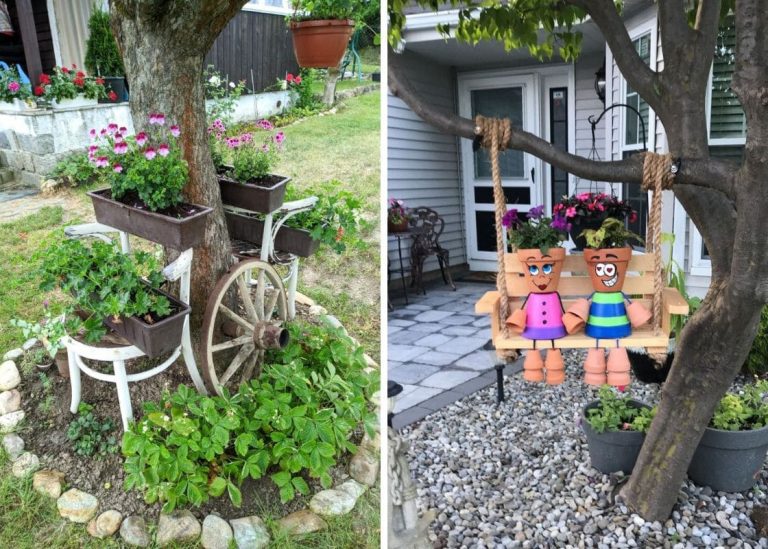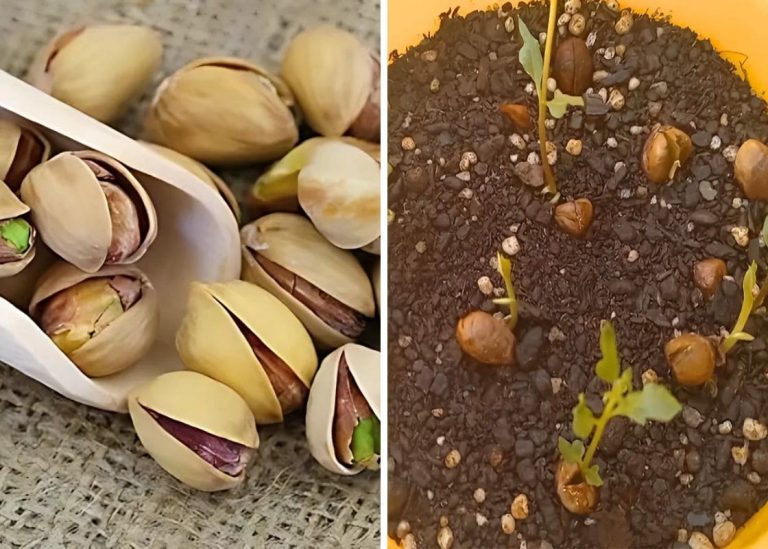How to Grow Strawberry In Containers With 100% Success
It started quietly—just me, a sunny corner of the patio, and a deep craving for something simple and sweet. Not from a plastic container, not lined up in a grocery display. I wanted strawberries that tasted like summer and smelled like earth. The kind that feel warm in your hand and stain your fingers red before they ever make it to the kitchen.
I didn’t have a big yard or raised beds. Just some leftover pots, a little potting mix, and a hope that maybe—just maybe—I could grow something beautiful in a small space.
The first few tries weren’t perfect. Some leaves wilted, a few berries stayed stubbornly green. But something kept me going. There’s a quiet magic in watching green tendrils stretch, in seeing flowers turn into fruit. It’s addictive, in the best way.
And now? I’ve turned a forgotten balcony corner into a strawberry haven. Red jewels dangle from vines, birds try to steal them, and every morning starts with a smile and a gentle harvest.
Why Strawberries Thrive in Containers (and Why I Love Them There)
Strawberries are surprisingly happy in containers. Their roots don’t dig deep; they like room to stretch out sideways, not down. That makes them ideal for pots, hanging baskets, and fabric grow bags.
For me, container gardening means fewer pests, less bending, and full control over soil, water, and sunlight. I can move them if a storm’s coming, tuck them under a roof during heavy rain, or follow the sun like a slow dance across the patio.
And let’s be honest—there’s nothing prettier than a cascade of green leaves and dangling red berries from a hanging basket or windowsill. They’re decorative and delicious.
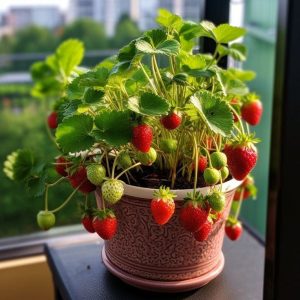
How to Grow Strawberries in Containers
Step 1: Choosing the Best Strawberry Varieties for Containers
I made the mistake once of growing June-bearing strawberries in pots. They were gorgeous—but they gave me one big crop, and then… nothing. For a small space, that felt like a letdown.
Here’s what I’ve learned through trial, error, and lots of late-night gardening forums:
-
June-Bearing: Great if you want one big harvest, especially for jam-making or freezing.
-
Ever-Bearing: Give you two solid harvests—early and late summer. These are reliable and easygoing.
-
Day-Neutral: These are my favorite. They fruit steadily all season long, as long as they get sun and care. Perfect for container gardens!
I’ve had the best success with varieties like ‘Albion’, ‘Seascape’, and ‘Quinault’—they’re flavorful, strong producers, and don’t mind the confinement of pots.

Step 2: Picking the Right Container
When I first started, I thought any pot would do. I’ve since learned that strawberries hate soggy roots and tight spaces. Here’s what works best:
-
Depth: At least 8–12 inches. Shallow pots dry out too fast and don’t allow the roots to anchor.
-
Width: The more space, the better. I usually place 2–3 plants in a 12-inch-wide pot.
-
Types: Hanging baskets, strawberry towers, old wooden crates, even upcycled gutters can work—just make sure they have drainage holes.
Once, I used a rusty wheelbarrow as a planter. It drained perfectly, and the strawberries spilled over the edges like a living sculpture. It was a showstopper.
Step 3: Preparing the Soil
Strawberries love rich, slightly acidic, well-draining soil. That sounds fancy, but here’s what I do:
-
Mix 1 part high-quality potting mix with 1 part compost.
-
Add a handful of perlite or coarse sand for drainage.
-
Check the pH if you want to go the extra mile—it should be between 5.5 and 6.5.
Avoid plain garden soil. I learned that the hard way—one summer, my container got compacted and root-bound, and the plants just sat there looking sad.
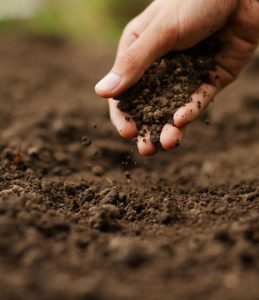
Step 4: Planting Your Strawberries
Planting strawberries is oddly satisfying—like tucking babies into bed. Gently remove them from their nursery pots and loosen the roots a bit.
-
Place them in your container so the crown—that middle part where the leaves and roots meet—sits just above the soil.
-
Press the soil gently around the roots.
-
Leave about an inch at the top for watering.
-
Give them a deep drink right after planting.
If the crown is buried, the plant might rot. If it’s too high, the roots will dry out. Think of it like Goldilocks—just right.
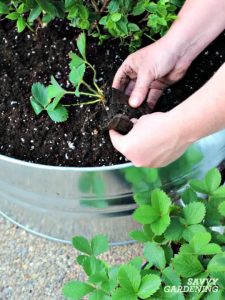
Caring for Your Container Strawberries (Sun, Water, and Love)
Sunlight:
Strawberries crave sunshine. Mine get at least 6–8 hours of direct sun a day, and they reward me with the sweetest, reddest fruit. If you don’t have enough natural light, a grow light can help, especially on shaded balconies.
Watering:
This is a balancing act. Too dry, and the berries shrivel. Too wet, and the roots rot. I check moisture by sticking a finger in the soil—if the top inch is dry, it’s time to water. I always water early in the morning, giving foliage time to dry and avoiding fungus.
Feeding:
They’re greedy little things, but I love them for it. I use a slow-release fertilizer once a month, and an organic liquid feed every 2–3 weeks. Once the flowers appear, I switch to a potassium-rich formula—this helps develop juicier fruit.

Feeding Your Strawberry Plants
Strawberries are heavy feeders, so regular fertilization is important for healthy growth and abundant fruiting.
You should use a balanced, slow-release fertilizer or an organic liquid fertilizer every 2–3 weeks during the growing season.
Once the plants start flowering, switch to a fertilizer high in potassium to encourage fruit development.
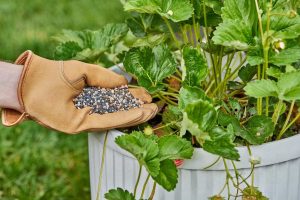
Managing Pests and Diseases
You’d think growing strawberries in pots on a third-floor balcony would protect them from drama. No slugs, no bugs, no mess—right? I thought so too… until I spotted tiny aphids lounging under the leaves like it was their personal resort. One day, everything looked healthy. The next, those tender green leaves had company.
I’ve come to accept that container gardening isn’t a pest-free fantasy—it’s just a different battlefield.
-
Aphids and spider mites show up quietly, like uninvited guests at a picnic. I keep a bottle of diluted neem oil handy now and give my plants a gentle misting every week or two. It smells a bit funky, but it keeps the leaves safe.
-
Slugs somehow found their way up, especially when I left pots near the edge of the garden path. I remember waking up one rainy morning to find slime trails across my concrete step. These days, I scatter crushed eggshells around the base or wrap a bit of copper tape along the rim. It works, and it feels oddly satisfying.
-
Powdery mildew was my wake-up call about airflow. I’d crammed too many plants into a single container, thinking I was being efficient. What I got was a sad cluster of fuzzy leaves and no fruit. Now, I space them like they need personal boundaries. It makes all the difference.
If I can share one lesson here—it’s to let your strawberries breathe. Give them light, air, and just enough room to stretch without touching. It’s not just about pests—it’s about giving your little plants the space to thrive.
Encouraging More Fruit
I used to get so excited when I saw the first flowers bloom that I’d celebrate like it was harvest day. But a seasoned gardener once told me, “If you want more fruit later, be a little patient now.” That advice stuck.
So now, when those first blooms appear on a young plant, I gently pinch them off. It feels wrong—but it’s so right. It helps the plant focus on root strength and lush leaves first, instead of rushing into fruiting too soon. The payoff? Bigger berries later and a much healthier plant.

Harvesting Your Strawberries
There’s nothing like picking a sun-warmed strawberry with your own hand. I wait until they’re fully red and slightly soft. I snip them with scissors—never pull, or you risk damaging the plant.
I usually harvest in the morning, when they’re cool and firm. And yes, I eat one or two before I even get back inside. No shame in that.
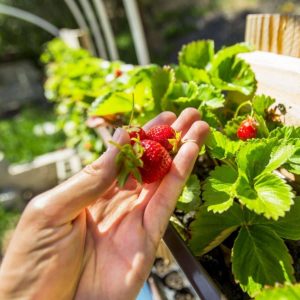
Overwintering Your Strawberry Plants
Winter used to make me nervous. I didn’t know what to do with my potted strawberries when the chill rolled in. Could they survive? Would I need to start over next year?
Turns out, with a little love and planning, these plants are tougher than they look.
If you live where winters are mild, your strawberries might keep going with just a cozy spot and some mulch. But in colder areas like mine, you’ll want to move your containers somewhere sheltered—a garage, an unheated shed, or a protected porch corner works great.
I treat it like a winter sleepover. I mulch around the base of each plant with straw, pine needles, or dry leaves—enough to insulate the roots but still let them breathe. If you’re using fabric grow bags, sometimes I tuck them into a larger box with extra insulation around the sides. It’s simple, but it works.
I water sparingly, just enough to keep the soil from going bone dry. Then I wait.
When spring whispers its return and the sun starts lingering a little longer, I gently pull back the mulch, give them a deep drink, and top up the soil with fresh compost.
And just like that—new green shoots, little white flowers, and the promise of another season of sweetness.
Final Thoughts
There’s something deeply comforting about growing strawberries in containers. It’s not just about the fruit—it’s about the quiet moments, the small wins, and the joy of watching something thrive under your care. No matter how little space you have, there’s room for sweetness to grow.
So go ahead—plant a pot, watch it bloom, and let your strawberry story begin.



